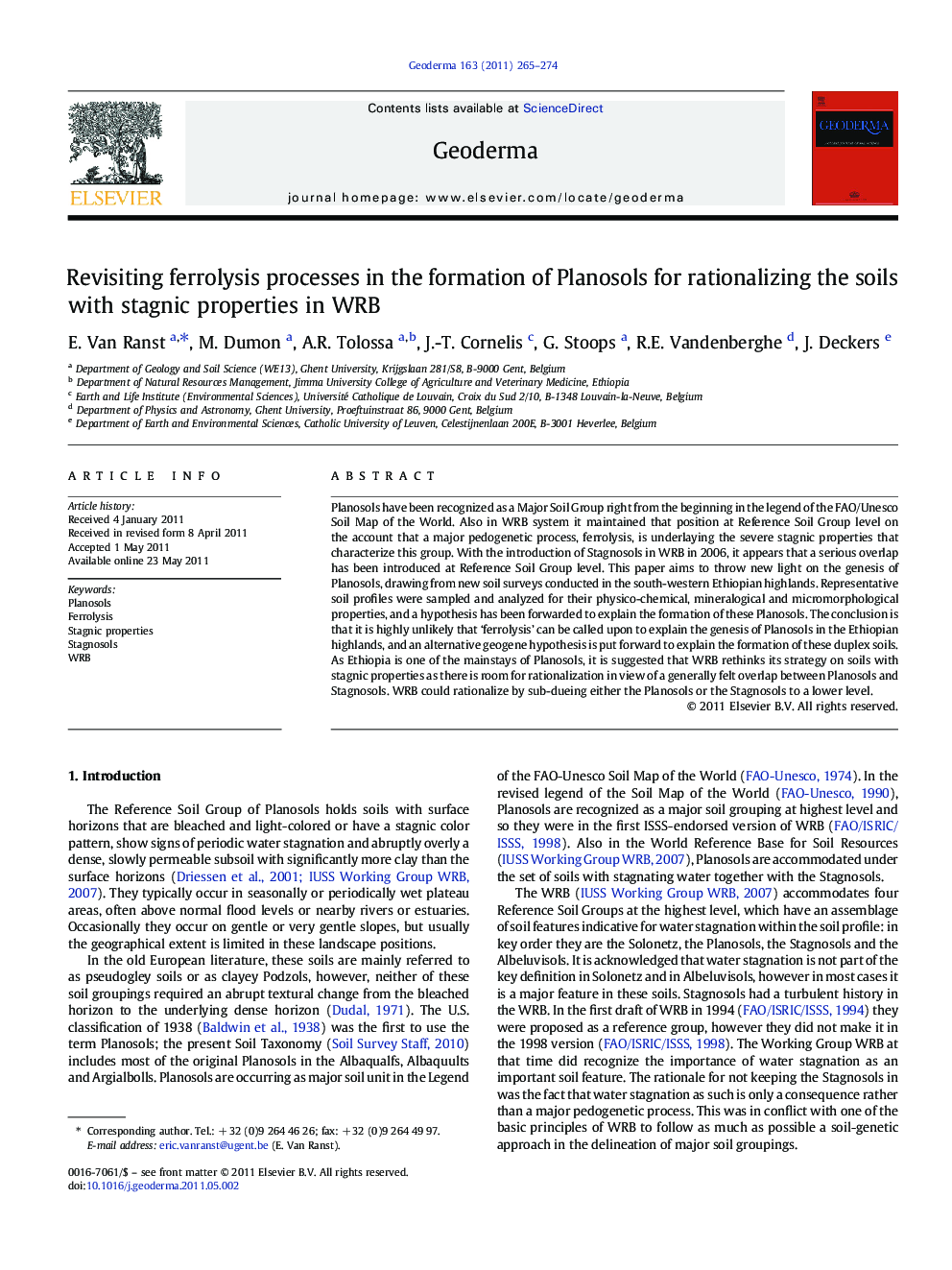| Article ID | Journal | Published Year | Pages | File Type |
|---|---|---|---|---|
| 4574166 | Geoderma | 2011 | 10 Pages |
Planosols have been recognized as a Major Soil Group right from the beginning in the legend of the FAO/Unesco Soil Map of the World. Also in WRB system it maintained that position at Reference Soil Group level on the account that a major pedogenetic process, ferrolysis, is underlaying the severe stagnic properties that characterize this group. With the introduction of Stagnosols in WRB in 2006, it appears that a serious overlap has been introduced at Reference Soil Group level. This paper aims to throw new light on the genesis of Planosols, drawing from new soil surveys conducted in the south-western Ethiopian highlands. Representative soil profiles were sampled and analyzed for their physico-chemical, mineralogical and micromorphological properties, and a hypothesis has been forwarded to explain the formation of these Planosols. The conclusion is that it is highly unlikely that ‘ferrolysis’ can be called upon to explain the genesis of Planosols in the Ethiopian highlands, and an alternative geogene hypothesis is put forward to explain the formation of these duplex soils. As Ethiopia is one of the mainstays of Planosols, it is suggested that WRB rethinks its strategy on soils with stagnic properties as there is room for rationalization in view of a generally felt overlap between Planosols and Stagnosols. WRB could rationalize by sub-dueing either the Planosols or the Stagnosols to a lower level.
Research highlights► It is unlikely that ‘ferrolysis’ explains the genesis of Vertic Planosols in the Ethiopian highlands. ► One soil-forming process, unique for the Planosols, cannot explain the association of Planosols with Vertisols in Ethiopia. ► An alternative geogene hypothesis is suggested to explain the formation of these duplex soils. ► WRB should rethink its strategy on soils with stagnic properties because of overlap between Planosols and Stagnosols.
